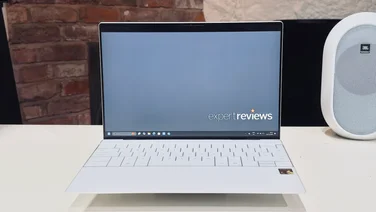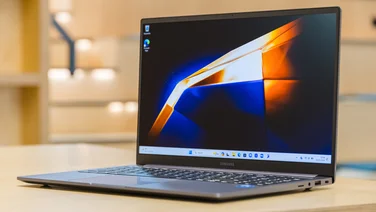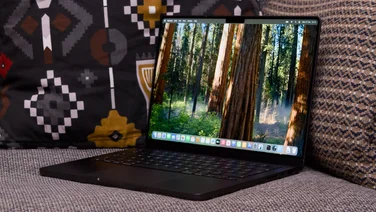To help us provide you with free impartial advice, we may earn a commission if you buy through links on our site. Learn more








The Asus Transformer range is no stranger to innovation, being one of the first Android tablets to come with a detachable keyboard. The latest model, the TF701T, is no exception, marking several firsts for Asus as well as for us as reviewers – chief among them an Nvidia Tegra 4 chipset and an IGZO display.

DESIGN AND DISPLAY
Until you switch it on, the TF701T looks strikingly similar to any other 10in Asus tablet, with a plain black front, but a brushed aluminium finish adding a touch of class to the rear. The screen bezels are thick enough to leave ample room for your fingers and thumbs, whether you’re holding the tablet in portrait or landscape, although the fingerprint-resistant coating Asus has applied to the Gorilla Glass display didn’t last the length of our review before we had to reach for the screen cleaner.

With a massive 2,560×1,600 screen resolution, the 10.1in screen is absolutely stunning to look at. That equates to a pin-sharp 298.9 pixels per inch (ppi). The visible detail in high-resolution images can be striking, especially with the vibrant colours created by the IGZO panel. It covers a wider colour gamut than traditional LCD, even while being more energy efficient, and gives still photos and videos plenty of pop on the TF701T. In-plane switching (IPS) technology means fantastic viewing angles too, with barely any discolouration at more extreme angles.

CHIPSET
The Transformer has no trouble driving so many pixels thanks to the Tegra 4 chipset. Nvidia’s latest mobile System-on-a-chip (SoC) has four high-performance cores and a fifth power saving core, which should help keep battery drain to a minimum when in Standby mode. Running at 1.9GHz and paired with 2GB of RAM, it renders Android smoothly and absolutely stormed through the SunSpider JavaScript benchmark with a 638ms overall score. That puts it among the fastest tablets around when it comes to web browsing.
Tegra 4 also has a 72-core GeForce GPU, which can play the most graphically intense games available on the Google Play Store smoothly. On paper, Tegra 4 is slower than the Adreno GPU found in Qualcomm’s Snapdragon 800 chipset, only scoring 15,197 compared to the Sony Xperia Z1’s 17551 in 3D Mark’s Ice Storm Unlimited benchmark, but this is virtually impossible to detect when playing games like Real Racing 3 or Shadowgun.
ANDROID
Android feels silky smooth in part because Asus hasn’t added a resource-hungry custom UI on top of the standard 4.2 Jelly Bean interface. The only additions are a skin for the notification drawer, which puts several Asus-specific app shortcuts underneath the regular system toggles, and a fourth icon next to the Home, Back and Recent Apps soft keys. Tapping it opens a list of small floating apps, which sit on top of any full screen application. It can be handy to have instant access to a tiny web browser, timer or calculator, but even if you never use the feature it doesn’t appear to impact performance at all.
Asus has even managed to dial down the number of superfluous pre-installed apps for the TF701T. There are still a few, some of which mimic existing Google features, including Supernote, Tasks, Asus Story, Amazon Kindle and Zinio, but there are nowhere near as many as there were on the MemoPad 10 FHD. Several apps make a more welcome return, including the Asus Splendid utility which lets you tweak colour hue, saturation and temperature to your own personal preference if you find the IGZO panel a little too vibrant out of the box.
KEYBOARD DOCK
The TF701T has much more potential for productivity than most other Android tablets, purely because it comes with a detachable keyboard dock. It’s thinner than the dock bundled with previous transformer models, even though it uses the same locking. Asus has upgraded the full-size USB port to the faster USB3 standard and the card reader now supports SDXC cards, which is on top of the Micro HDMI, micro SDXC card slot and 3.5mm audio jack on the tablet itself.
The Chiclet-style QWERTY keyboard uses reduced-size keys, which are tightly grouped together and could be troublesome for anyone with larger hands looking to type quickly with accuracy. There’s a surprising amount of travel in each key, so it was at least more comfortable than using the Microsoft Surface Touch cover, but it will take some getting used to before you banish typos completely. The function keys have been replaced with Android shortcuts, letting you quickly toggle brightness and Wi-Fi, take a screenshot or control multimedia playback. There’s even a small touchpad directly below the keyboard, letting you completely ditch the touchscreen and use the tablet as an Android-powered laptop if you prefer.

The other reason to keep the dock close by is its secondary battery. Without it, the TF701T managed a little under ten hours in our video rundown test, but once connected it lasted an impressive 15h 17m. Unfortunately, you’ll need to use the proprietary Asus charger to top up both tablet and dock with power as there’s no Micro USB port, but it can at least charge both parts at the same time when docked.
CAMERA
You’ll probably want to detach the keyboard to use the 5-megapixel rear camera, which has tap-to-focus and a burst mode that can capture 100 shots in less than five seconds. ISO and white balance are both within easy reach, as is a selection of image presets including HDR, panorama and a GIF animation mode. As usual with tablet cameras, though, quality is only average. The TF701T managed to capture a reasonable amount of detail in our outdoor images, although it still managed to blow out the sky on an otherwise dismal day.

Detail dropped off rapidly as we turned down the lights
Moving inside, it coped very well with our brightly lit studio scene, preserving lots of detail and capturing accurate colours. There was a drop off when switching to the dimly lit shot, losing definition in the darker areas and some detail in the more brightly lit parts of the scene, but it still did reasonably well considering it has no built-in flash. It even managed to preserve a surprising amount of detail in our low-light shot, although it struggled with the glare from our LED fans and still created a lot of noise.

There’s plenty of settings to tinker with, if that appeals to you
Video produced some respectable results too, capturing plenty of detail in brightly-lit scenes even when taking motion into account. Once the lights dimmed, however, it struggled to lock an exposure with the rotating fan LED in shot. There is a touch auto-exposure setting, so you can manually adjust the exposure mid-recording, but this is still a tough test that the TF701T didn’t impress in.

CONCLUSION
With a screen that rivals the Google Nexus 10 for clarity, ample performance and a near Vanilla Android experience, Asus has produced a fantastic Android tablet with the TF701T. Whether or not you need the dock will determine whether it’s the right tablet for you. If you’re after something purely for entertainment, £500 is a lot of money compared to cheaper 10in alternatives such as the Sony Xperia Tablet Z or iPad Air. If you do a lot of typing though, and want a tablet more than a laptop, then this a great device.






